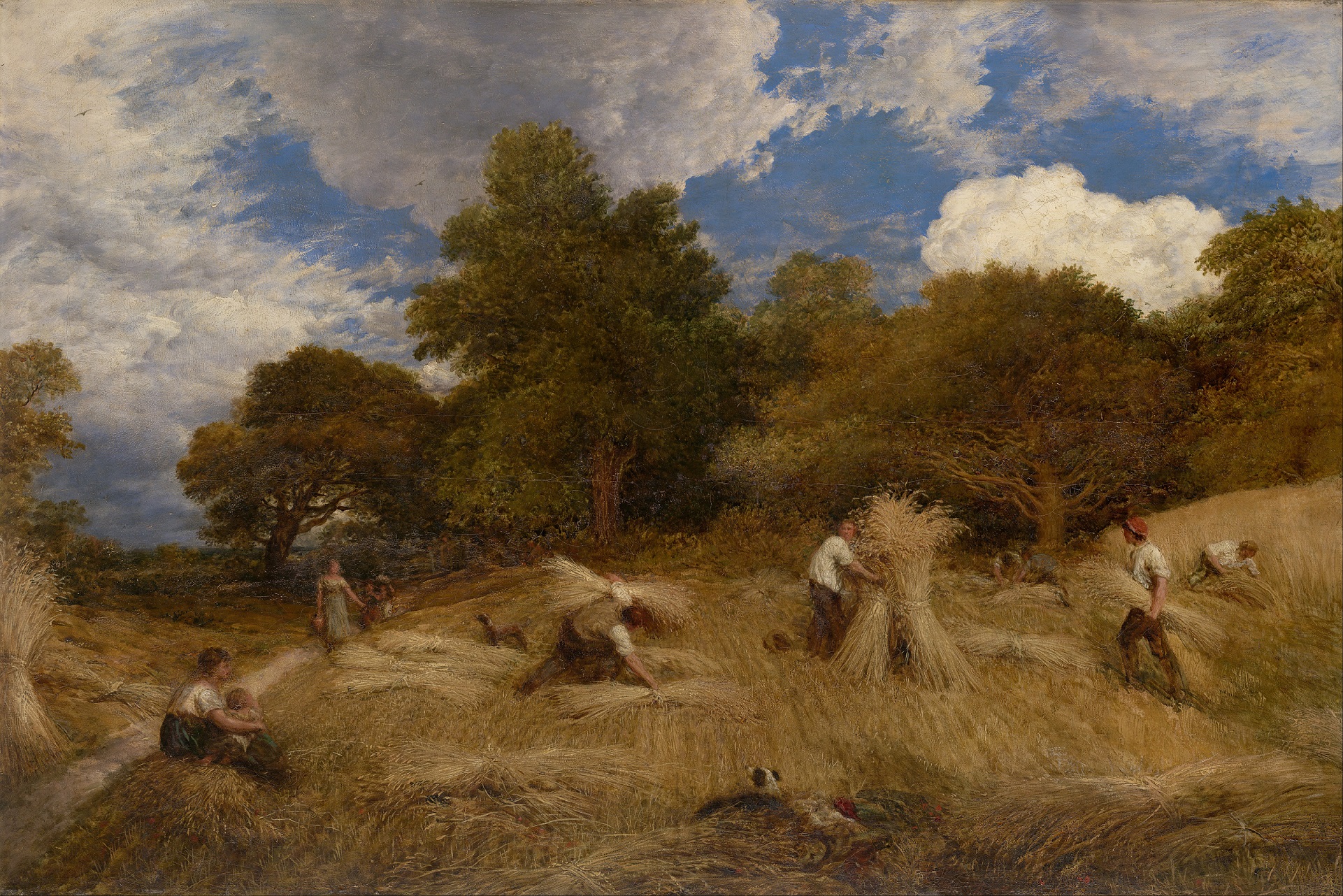Watching the news, it can be easy to feel pessimistic about the state of the environment. Many a leader has warned of environmental catastrophes to come. Pope Francis, for example, has recently said that humanity is turning the planet into a “wasteland full of debris, desolation and filth.” But there are also many who hold a more optimistic view, believing that human ingenuity can help preserve the environment. HumanProgress.org advisory board member and Rockefeller University professor Jesse H. Ausubel, who was integral to setting up the world’s first climate change conference in Geneva in 1979, has shown how technological progress allows nature to rebound. He envisions a future where humanity is ever less dependent on natural resources. Here are 7 graphs that give cause for such environmental optimism.
1. As people escape poverty and spend less time and energy on the basics of survival, they can come to care more about the environment. The incredible decline in Chinese poverty spurred by economic liberalization, for example, has coincided with better preservation of forests. In 2015, there were 511,800 more square kilometers of forest area in China than in 1990. Over the same time period, Europe gained 212,122 square kilometers of forest area, while North America gained 64,410. Africa, on the other hand—the poorest continent—lost forest area.
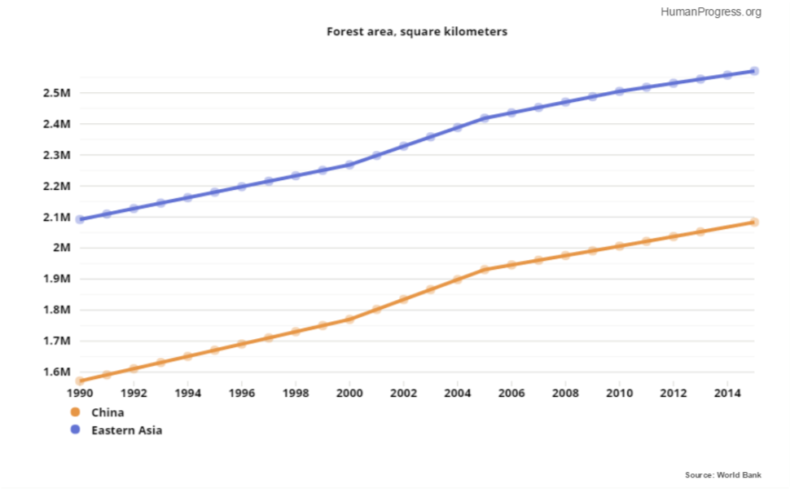
2. To illustrate the divergent trends in Europe and Africa, it is also helpful to look at how forest area has changed as a share of total land area. This measure makes it easier to compare the continents despite their very different sizes. While the change is very slight in percentage terms (please note the Y axis scale), the direction of the trends over the last two decades is clear.
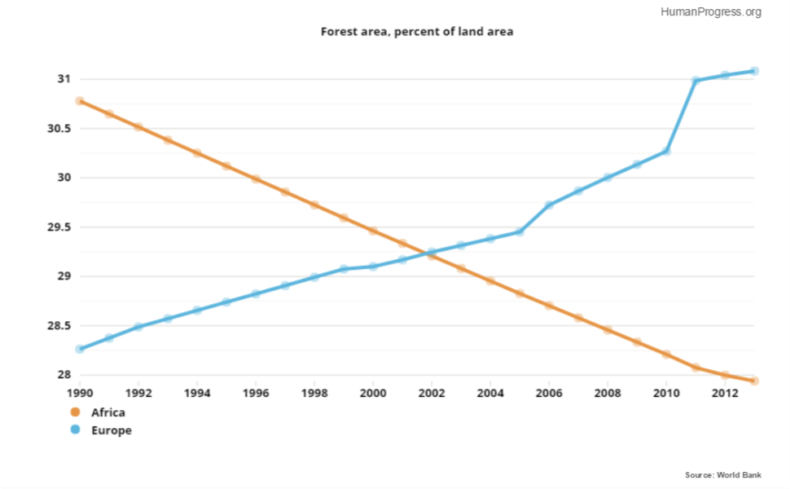
3. Not only does prosperity enable more people to care about the environment, but wealthy countries also have access to better and greener technology. As a result, many now use water much more efficiently than in the past. Consider Western Europe. According to data from the World Bank, between 1982 and 2014, Ireland increased its water productivity—the amount of GDP generated per unit of freshwater withdrawal—by 321%, while the United Kingdom’s rose by 243%.
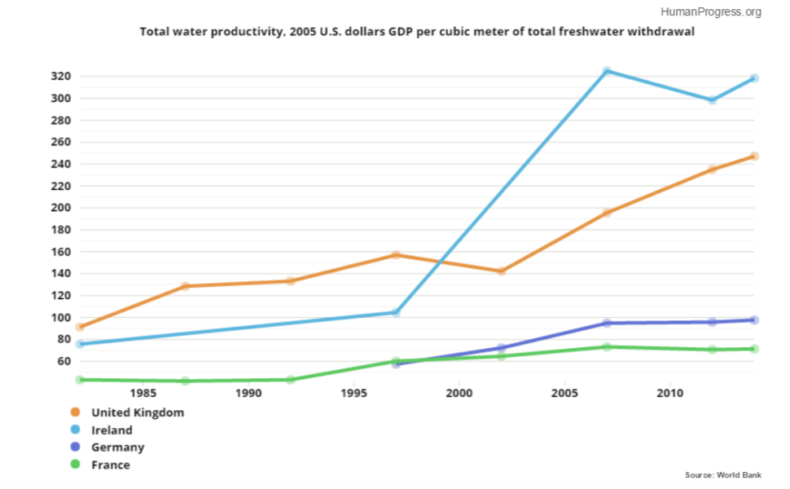
4. Better technology has also allowed wealthy countries to reduce cropland erosion. According to data from the U.S. Department of Agriculture, wind erosion of cropland in the United States decreased from 3.3 tons per acre in 1982 to 2.1 in 2007. Water erosion, similarly, fell from 4 tons per acre to 2.7 over the same time period.
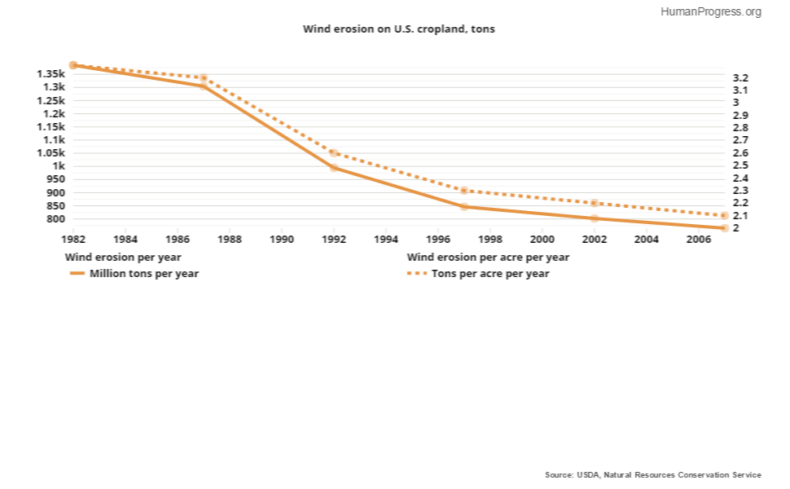
5. Thanks to this reduction in erosion and numerous other agricultural productivity-boosting measures, humanity now produces far more food with less land. Between 1961 and 2014, global cereal yields per unit of land increased by 154%. If farmers worldwide can reach the productivity of the US farmer, humanity will be able to return a landmass the size of India back to nature.

6. Technology has not only allowed humanity to use water and land more efficiently, but it has also enabled us to reduce pollution of the air. Agricultural processes now emit far fewer greenhouse gases, even while producing more food than ever before and bringing hunger to an all-time low. In the countries surveyed by the United Nations, from 1980 to 2012 total emissions fell by almost 340 thousand gigagrams of carbon dioxide equivalent.
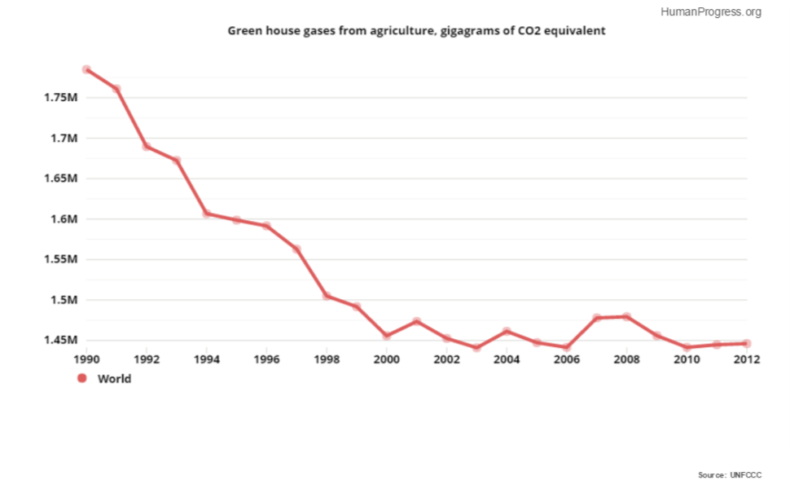
7. Looking beyond agriculture, overall harmful emissions in the United States have actually fallen relative to the growth of the population, of GDP and of the number of vehicle miles traveled. Globally, emissions have also decreased somewhat relative to GDP.
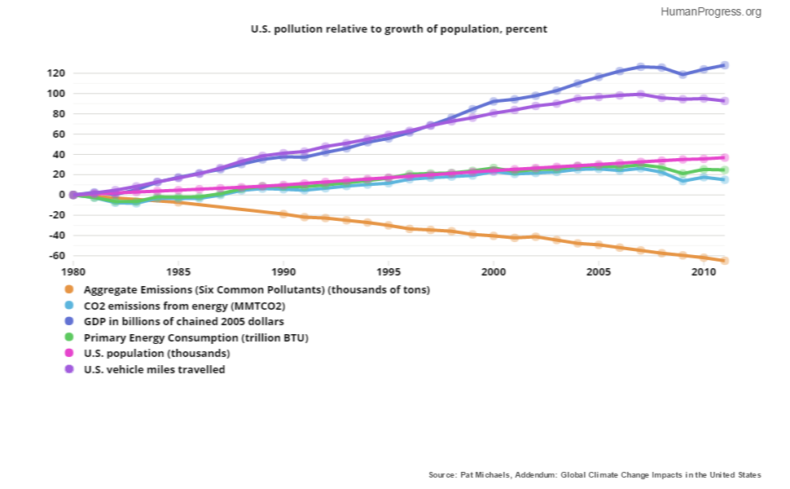
This article first appeared in CapX.

